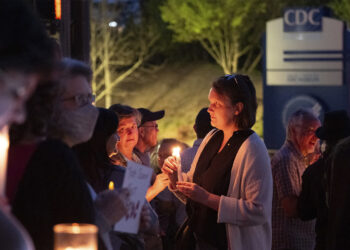Earlier initiation of digital screening mammography at age 40 years leads to substantial healthcare savings by reducing the cost of breast cancer treatment, according to a new cost-effectiveness study.
Based on data in Canada for a population-based breast screening program, biennial screening for ages 40-74 years results in fewer deaths, more years of life for patients, and lower healthcare spending than a program starting at age 50 years.
Annual screening at age 40 years also appears to be cost-effective and leads to the best breast cancer outcomes compared with the current Canadian standard of biennial screening at age 50 years.
“As clinicians who work in the field of breast cancer, we were aware of how rapidly breast cancer treatment has evolved, as well as the associated exponential increase in costs of breast cancer management,” lead author Anna Wilkinson, MD, associate professor of family medicine at the University of Ottawa and an oncologist at the Ottawa Hospital Cancer Centre, Ottawa, Ontario, Canada, told Medscape Medical News.
Previous cost-effectiveness analyses used cost data from more than a decade ago and only included 2 years of treatment, she said, which means that newer treatment advances in immunotherapy, cyclin-dependent kinase 4/6 inhibitors, and antibody drug conjugates weren’t included.
“When we used these up-to-date costs to determine cost effectiveness, our findings were striking,” Wilkinson said. “Screening for breast cancer not only saves lives but also saves money.”
The study was published online on January 2 in JAMA Network Open.
Analyzing Costs
In a previous study, Wilkinson and colleagues across the diagnosis and treatment continuum — including pathology, radiology, surgery, radiation therapy, medical oncology, administration, and pharmacy — determined the accurate costs for breast cancer treatment by stage based on 2023 standard of care numbers in Ontario.
In this study, members of the same research team used these numbers and the Canadian Partnership Against Cancer/Statistics Canada OncoSim-Breast microsimulation model to estimate the effects of the following five screening scenarios: No screening, biennial (both ages 40-74 years and 50-74 years), hybrid (biennial for ages 40-49 years and annual for ages 50-74 years), and annual screening for ages 40-74 years. They calculated the incremental cost-effectiveness ratios for deaths averted and life-years gained, as well as the incremental cost-utility ratios for quality-adjusted life-years (QALYs) gained.
Overall, earlier initiation of breast cancer screening at age 40 years (vs age 50 years) was associated with lower healthcare spending on breast cancer treatment and better clinical outcomes, including deaths averted, life-years saved, and QALYs gained.
Compared with the current Canadian standard of biennial screening for ages 50-74 years, biennial screening at ages 40-74 years saved $49,759 per death averted, $1558 per life-year saved, and $2007 per QALY gained, all in Canadian dollars.
Compared with biennial screening for ages 50-74 years, annual screening for ages 40-74 years was cost-effective and achieved the best breast cancer outcomes, saving $25,501 per death averted, $1100 per life-year saved, and $1447 per QALY gained.
Although annual screening was less cost-effective than biennial screening for ages 40-74 years, the efficacy of annual screening at a 70% participation rate would avert as many deaths as 100% participation rate assumed for biennial screening among ages 50-74 years in this study, Wilkinson said. This finding means that annual screening could help overcome suboptimal screening participation rates.
Ultimately, although screening costs increased based on the number of screenings over a patient’s lifetime, the costs were completely or largely offset by reduced breast cancer treatment costs.
“This knowledge is particularly important for women between ages 40-49 years, given the controversy around this issue,” Wilkinson said. “We know screening women in their 40s saves lives and reduces morbidity. The knowledge that screening starting at 40 is cost-saving will assist governments and health systems when considering implementation of organized programs.”
Breast Cancer Screening Recommendations
In April 2024, the US Preventive Services Task Force recommended lowering the start of breast cancer screening from age 50 years to 40 years, particularly due to the increasing incidence of breast cancer in younger women, the mortality benefit of screening, and the prevalence of earlier diagnoses among women in minority racial and ethnic groups.
The Canadian Task Force on Preventive Health Care doesn’t recommend systematic screening for breast cancer among patients aged 40-49 years, but some provinces and territories have screening programs that start at age 40 years.

“This is a very timely research paper. There is growing evidence that starting breast cancer screening in women between 40-50 years may now be cost-effective,” said Stuart Peacock, DPhil, the Leslie diamond chair in cancer survivorship at Simon Fraser University in Burnaby, British Columbia, Canada, and codirector of the Canadian Centre for Applied Research in Cancer Control in Vancouver, British Columbia, Canada.
Peacock, who wasn’t involved with this study, has researched the cost-effectiveness of mammography screening strategies based on age and frequency. His group found that biennial screening was more cost-effective than annual screening, and screening at younger ages (40-49 years) was more cost-effective than at older ages (70-74 years).
“This is likely due to the significant improvements in breast cancer detection, treatment, and survival over the last three decades,” Peacock said. “We still need to be careful about overdiagnosis and overtreatment for some women but evidence from this paper suggests a nuanced approach to screening younger women could have significant benefits.”
Economic analyses can have important policy implications, particularly for single-payer health systems, the study authors wrote. The results of this study, for instance, indicate a need for greater investment in screening programs at earlier ages, Wilkinson said.
“This study found that screening costs are offset by reduced cancer therapy costs in a single-payer system,” said Nicole Mittmann, PhD, assistant professor of pharmacology and toxicology at the University of Toronto, Ontario, Canada, and associate scientist at Sunnybrook Health Sciences Centre in Toronto, Ontario, Canada.
Mittmann, who wasn’t involved with this study, has conducted previous research on the cost-effectiveness of mammography in Canada, as well as an investigation of real-world health system resource utilization and costs for a risk-based screening approach. She found that a population-based approach to screening can decrease deaths and increase costs, though a risk-based approach could lead to earlier detection and treatment while also reducing costs and the overall burden on the healthcare system.
“Although earlier screening is associated with improved outcomes and seems to be cost-effective, the overall budget impact — namely how much it costs to implement earlier population-wide screening — wasn’t reported,” Mittmann said. “A broader societal perspective, including costs and outcomes associated with caregivers, employment, social, and other factors, may also influence the results.”
The study received no external funding. Wilkinson reported receiving personal fees from Thrive Health outside of this study. Peacock and Mittmann reported no relevant financial relationships.
Carolyn Crist is a health and medical journalist who reports on the latest studies for Medscape Medical News, MDedge, and WebMD.
Source link : https://www.medscape.com/viewarticle/breast-cancer-screening-40-seems-cost-effective-canada-2025a1000155?src=rss
Author :
Publish date : 2025-01-17 09:20:11
Copyright for syndicated content belongs to the linked Source.














